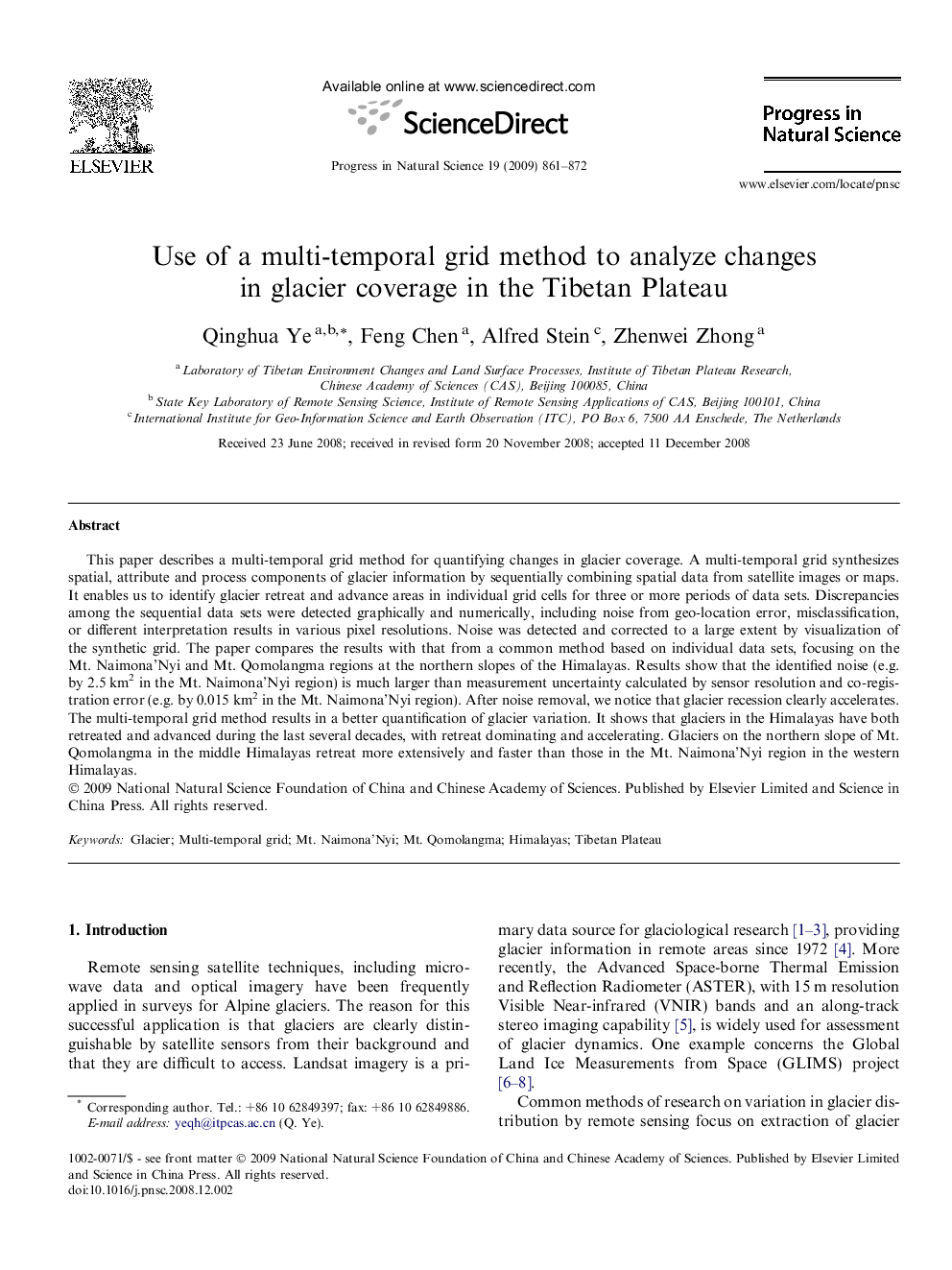| Article ID | Journal | Published Year | Pages | File Type |
|---|---|---|---|---|
| 1548810 | Progress in Natural Science: Materials International | 2009 | 12 Pages |
This paper describes a multi-temporal grid method for quantifying changes in glacier coverage. A multi-temporal grid synthesizes spatial, attribute and process components of glacier information by sequentially combining spatial data from satellite images or maps. It enables us to identify glacier retreat and advance areas in individual grid cells for three or more periods of data sets. Discrepancies among the sequential data sets were detected graphically and numerically, including noise from geo-location error, misclassification, or different interpretation results in various pixel resolutions. Noise was detected and corrected to a large extent by visualization of the synthetic grid. The paper compares the results with that from a common method based on individual data sets, focusing on the Mt. Naimona’Nyi and Mt. Qomolangma regions at the northern slopes of the Himalayas. Results show that the identified noise (e.g. by 2.5 km2 in the Mt. Naimona’Nyi region) is much larger than measurement uncertainty calculated by sensor resolution and co-registration error (e.g. by 0.015 km2 in the Mt. Naimona’Nyi region). After noise removal, we notice that glacier recession clearly accelerates. The multi-temporal grid method results in a better quantification of glacier variation. It shows that glaciers in the Himalayas have both retreated and advanced during the last several decades, with retreat dominating and accelerating. Glaciers on the northern slope of Mt. Qomolangma in the middle Himalayas retreat more extensively and faster than those in the Mt. Naimona’Nyi region in the western Himalayas.
